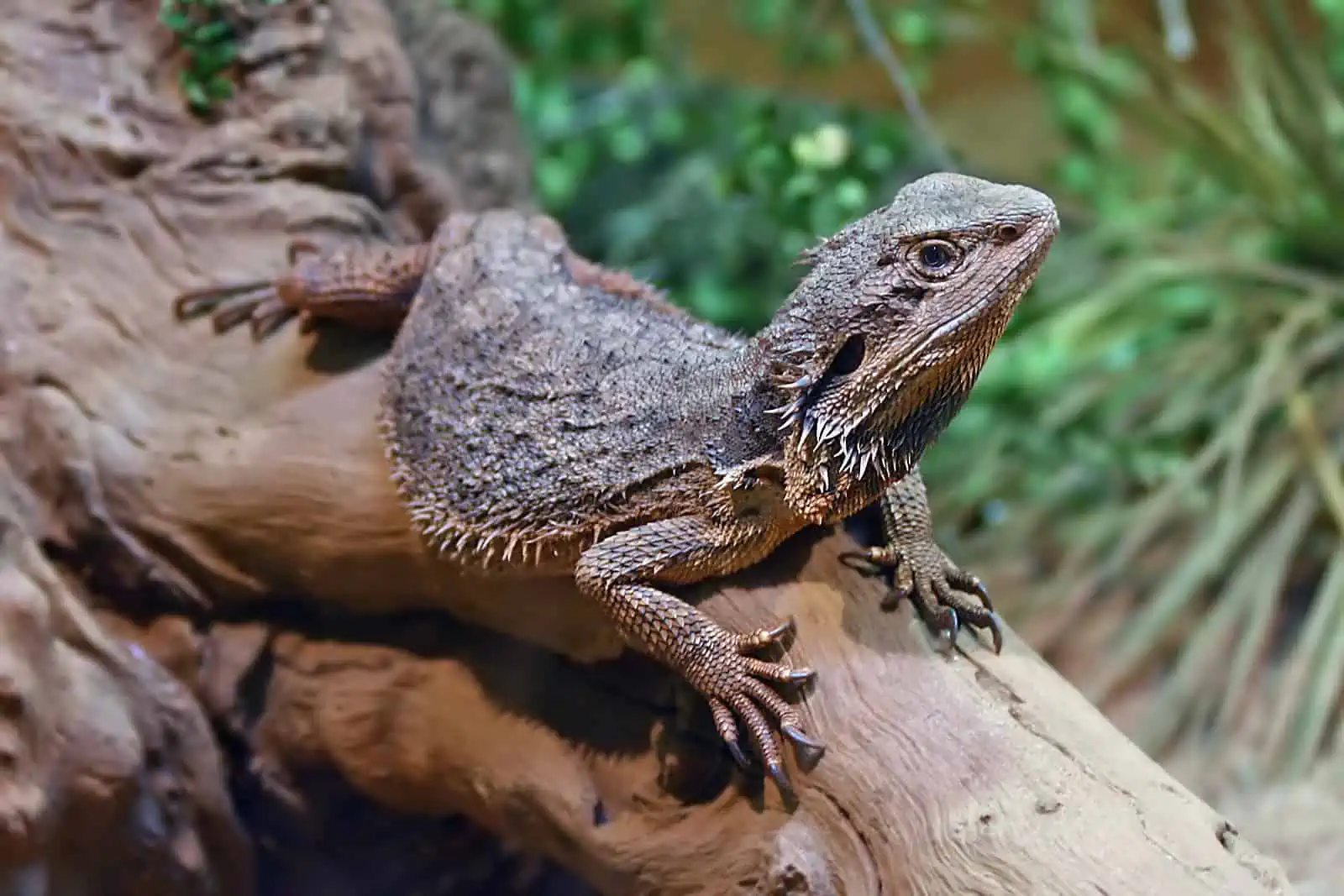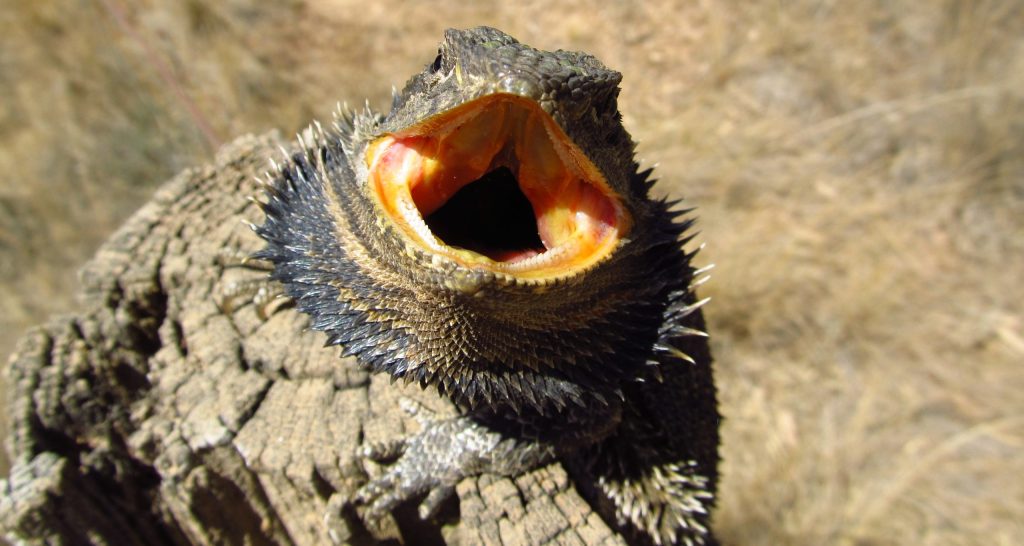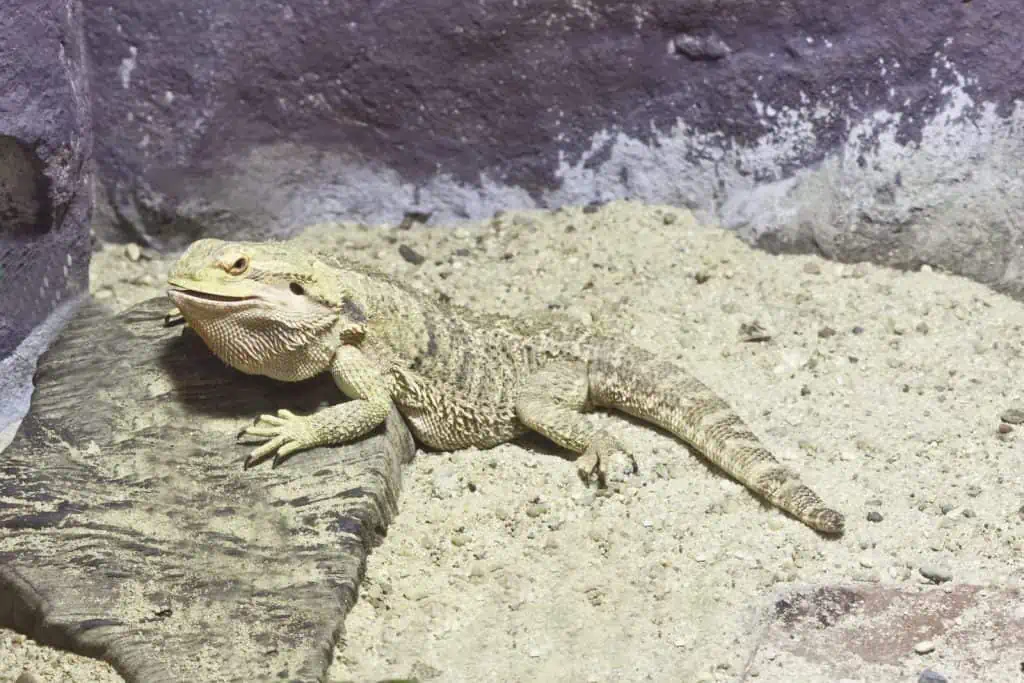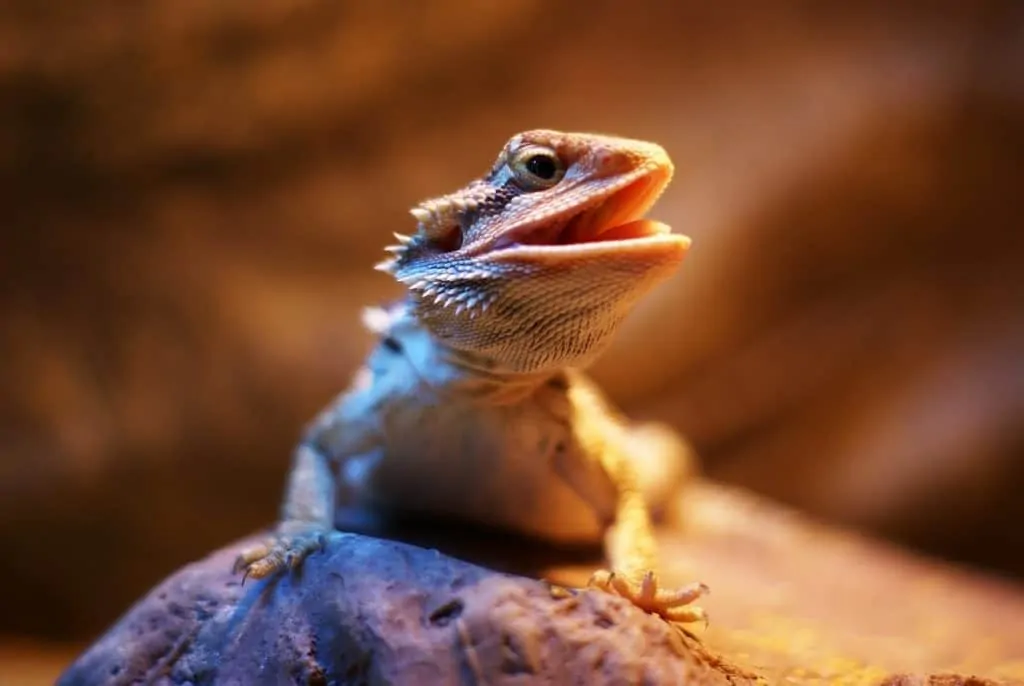Are you looking for a reptile pet that is friendly and personable? If so, the bearded dragon may be the pet for you! Most reptile species show little interest in their owners. However, the bearded dragons appear to bond with their owners. They are even safe for children.
Bearded dragons are the few reptiles that appear to display affection and enjoy handling.
A bearded dragon that is properly cared for can be an ideal reptile companion. They appear to be able to recognize their owners and may even greet you when you approach them. You will learn about this lizard’s demeanor, taming, and handling in this article.
What Is the Personality of a Bearded Dragon?
Each bearded dragon has its own unique personality. Some bearded dragons can be feisty, while others can be mellow. However, two important factors can determine how a beardie will respond to you: mood and quality of care.
Mood
It is important to read your dragon’s mood. If it is feeling stressed or threatened, it will likely not take well to being handled. When stressed, beardies may pace back and forth in their enclosure. If your bearded dragon is newly acquired, it will take time to get to know you.
Are Bearded Dragons Friendly Towards Humans?
Bearded dragons are calm when handled because they have become familiar with their owners.
You can get your beardie to be friendly toward others by allowing it to become familiar with them. Doing this is best done in a calm environment. While holding your beardie, let others talk to it or offer it food. If your beardie shows signs of stress, discontinue it and return it to its enclosure. You can try again later.
Are Bearded Dragons Friendly Towards Children?
Children can safely handle bearded dragons. However, before this can occur, your dragon first needs to feel safe being handled by you. When your beardie reaches this stage, it can become familiar with children.
You can use your beardie to children by following what was described in the previous section. Most important is that you remind children to be gentle when holding it. Additionally, be sure to supervise children when they are holding your bearded dragon.
Are Bearded Dragons Friendly with Other Bearded Dragons?
In the wild, bearded dragons are solitary. Males will defend their territory against other males. At breeding time, males will show interest in females. For this reason, it is best to keep bearded dragons alone.
If you want to keep bearded dragons together, it is best to introduce them gradually. Place each beardie in a separate enclosure. Position the enclosures so that the beardies can see each other. Gradually move the enclosures closer to each other.
During this process, observe how the lizards react toward each other. If they appear calm, you can place them in the same space. Please continue monitoring them until you feel confident they are getting along.
Are They Friendly with Other Pets?
How bearded dragons respond to other pets will vary with each situation. Cats normally prey on smaller animals, so that compatibility will depend on your cat’s nature. If your cat accepts your beardie, then your beardie should remain calm.
Dogs normally do not show interest in reptiles. However, if your dog is energetic, your beardie may feel threatened by your dog’s behavior.
How To Tell If Your Bearded Dragon Is Feeling Defensive
The following are signs that your bearded dragon may feel stressed or angry. Do not try to handle your bearded dragon if it shows any of the following signs:
Beard Puffing
Bearded dragons inflate themselves to look larger when they feel threatened. This behavior may be accompanied by them looking at you with an open mouth.
Body Bloating
Body bloating occurs when bearded dragons inhale air, which makes them look larger.
Turning Black
Your dragon’s beard may turn black. This skin darkening may occur when your dragon feels threatened or angry.
Open Mouth
Bearded dragons may hold their mouth open when they feel threatened.
Rapid Head Bobbing
Bearded dragons engage in head bobbing for a variety of reasons, including:
- Demonstrating territorial behavior toward other dragons.
- Showing a readiness to mate during breeding time.
- Displaying dominance or submission toward other dragons or you. When it comes to people, head bobbing tends to lessen as dragons become familiar with their owner.
Head bobbing is often accompanied by foot-stomping. This behavior is used as a display of dominance.
Arm Waving
Bearded dragons may wave their arms as a territorial or courtship display.
Hissing
Bearded dragons may hiss when they feel threatened. The puffing may accompany this aggressive gesture up of their beard.
Biting
As a last resort, bearded dragons will bite if they feel threatened.
Quality of Care
The quality of care that you give your bearded dragon will affect its demeanor toward you. If your dragon is not receiving the proper care, it may show no interest in engaging with you. The lack of proper care can cause your beardie to be stressed.
Housing
Bearded dragons need ample room in their habitat. The following are recommendations:
- Hatchlings and juveniles: 20–50-gallon tank.
- Young adults: 50-gallon tank.
- Adults: 75–120-gallon tank.
Temperature and Humidity
Bearded dragons need to be provided with UVA and UVB lighting. They also need a temperature gradient between 110-70 degrees Fahrenheit (43-20 degrees Centigrade). This means that the warmest part of the enclosure is 110 degrees while the coolest is 70 degrees. The humidity must be kept below 60%.
Substrate
It is important to have the right substrate for your bearded dragon. The wrong substrate can be hazardous to your pet. The following are recommended substrates:
- Paper towels
- Ceramic tiles
- Vinal tiles
- Newspaper
- Slate
- Reptile carpets
The following substrates should be avoided:
- Sand: Sand can cause impaction in your pet if swallowed.
- Wood shavings: Wood shavings contain toxic chemicals.
- Coconut coir: Coconut coir retains humidity, which can cause problems in maintaining the humidity level of the enclosure.
Avoid any small and loose substrate that your pet can ingest. Such substrates can cause impaction in your beardie if ingested.
Feeding
Bearded dragons are omnivores and need a balanced animal and plant matter diet. When young, bearded dragons eat more animal matter than plant matter. As they get older, they eat more plant matter than animal matter.
The following are recommended food items:
Animal Matter
- Crickets
- Grasshoppers
- Dubia roaches
- Super worms
- Hornworms
- Silkworms
Plant Matter
- Leafy greens such as choy, bok, and basil
- Vegetables
- Fruits
The food you give your bearded dragon should be supplemented with vitamin D3 and calcium regularly.
How to Treat a Bearded Dragon So That It Stays Friendly?
To be able to handle your bearded dragon, you first need to gain its trust. You build trust with your bearded dragon by how you approach handling it for the first time.
Note: Before and after handling your beardie, wash your hands. Bearded dragons, like other reptiles, are potential carriers of zoonotic diseases. Zoonotic diseases are diseases that reptiles can spread to you and you to your reptile. The following are ways to build trust and how to handle your bearded dragon:
How to Build Trust with Your Bearded Dragon
- Open your pet’s enclosure slowly.
- With your palms up, move your hand slowly toward the lizard. Also, approach your beardie from the side rather than head-on. Doing so will make it easier for your beardie to see you.
- When your hands are close to your beardie, stop and remain still. Let your beardie get used to you.
- If your beardie shows no fear, you can gently stroke your beardie. If your beardie shows fear, leave your pet alone and try again later.
How to Pick Up Your Bearded Dragon?
If your beardie allows you to stroke it, you can take the next step, picking it up. Do the following:
- Approach your beardie at their level by keeping your head at their level. Reaching your beardie from above can generate a fear response.
- Slowly slide your hand underneath your beardie’s belly.
- Slowly lift your bearded dragon.
- If your beardie tries to escape, allow it to do so. Do not try to grab or restrain your beardie. Also, never make sudden gestures.
- When your bearded dragons appear to be calm again, try again. Keep trying until your beardie stays on your hand.
- Once your bearded dragon allows you to pick it up, handle it daily for 15 minutes. You can extend the handling time as your bearded dragon gets used to you.
Take Care!
We hope you enjoyed this article. Beardies are among the few reptiles that seem to enjoy human contact. However, this can only occur if your pet receives the proper care and you have won its trust. By doing this, you can enjoy your beardie’s personable personality.






One Comment
thank you for your informative words. I’ve owned my beardie for 5 years now, and always learning something new. never thought I’d be as attached to my beardie, Lilly, as I am. I love her so much and want to do all I can to keep her safe, healthy and happy.